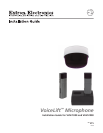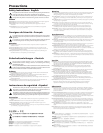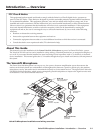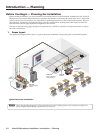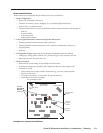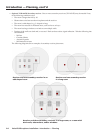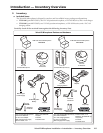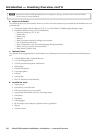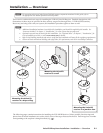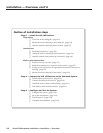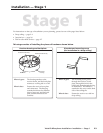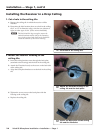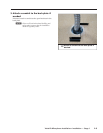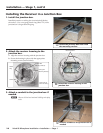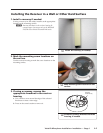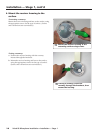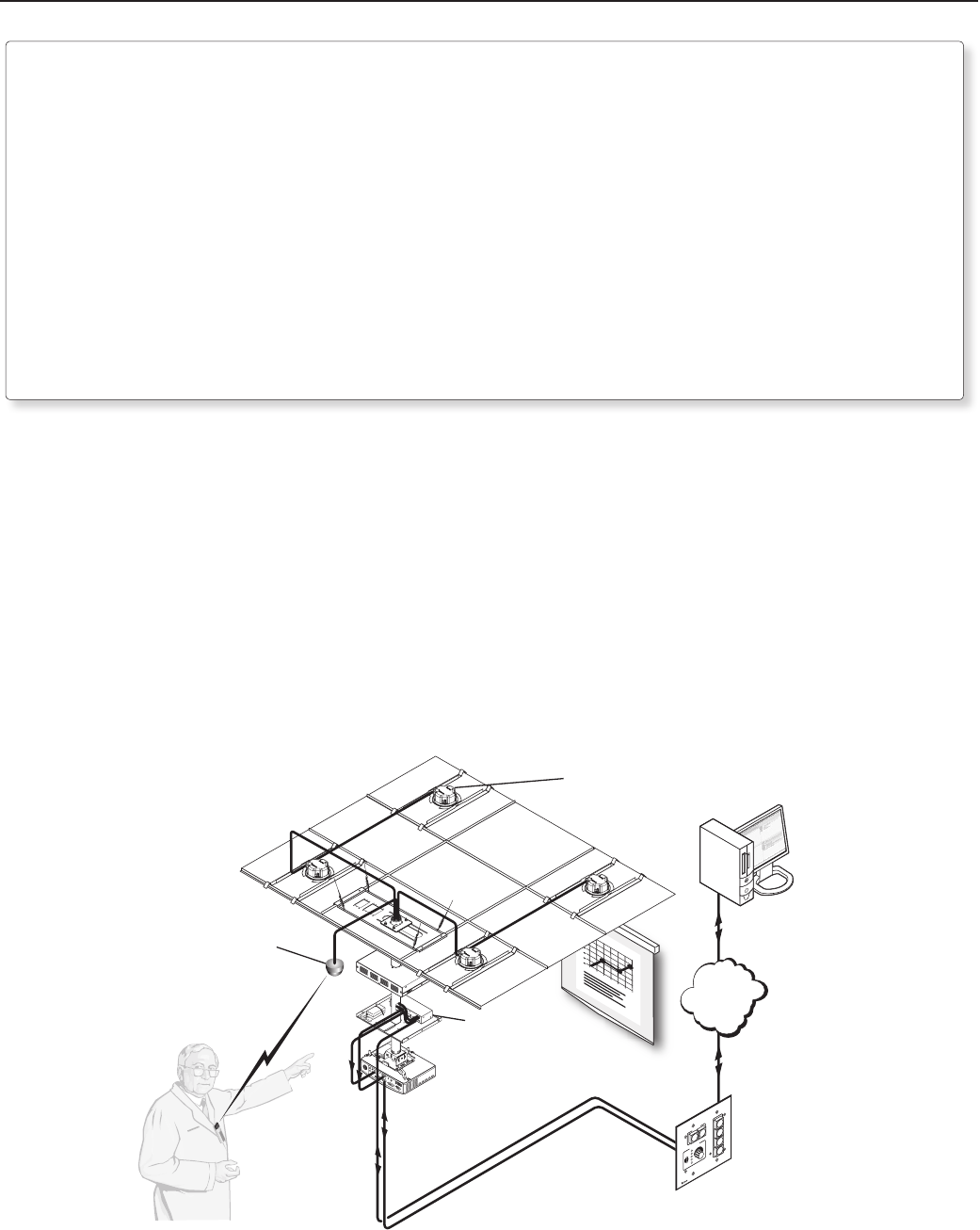
VoiceLift Microphone Installation • Introduction — Overview
1-1
Introduction — Overview
About This Guide
This manual covers the installation of the Extron VoiceLift
™
Microphone as part of an Extron PoleVault
™
system.
The VoiceLift VLR 102 receiver can be installed in a drop ceiling, a standard junction box, an octagonal ceiling box, or
on a wall. It is assumed that the installer has some knowledge of and experience with A/V, electrical, or electronic
device installation. This manual guides the A/V installer through the steps to install and connect each component of
the system.
The VoiceLift Microphone
The Extron VoiceLift Microphone is an easy-to-use, low-power, classroom amplification system that ensures the
teacher can be clearly heard at a comfortable level throughout the classroom. Speech is picked up by the pendant
microphone worn by the teacher and is transmitted wirelessly to a base station receiver. The signal is then fed to the
PVS 204SA PoleVault Switcher, which powers strategically placed loudspeakers to improve the signal-to-noise ratio
of the teacher's voice above ambient noise level.
L
R
AUX/MIX IN
1B
1A
I
N
P
U
T
S
O
U
T
P
U
T
S
2B
2A
4
3
RS-232 MLC/IR
DC VOL
4/8
Ohms
AMPLIFIED OUTPUTS
VOL/MUTE
Tx
A
B
C
Rx
IR
12V
10V
POWER
12V
3A MAX
US
LISTED
17
TT
AUDIO/VIDEO
APPARATUS
®
RGB
VIDEO
RGB
VIDEO
STEREO
ON
DUAL
MONO
HIGH
PASS
FILTER
OFF
ON
CONFIG
DISPLAY
MLC 104 IP Plus
VOLUME
1
2
3
4
ON
OFF
VIDEO
AUX
VIDEO
IMAGE
MUTE
PC
SI 3C LP
Plenum Full-Range
Ceiling Speakers
PVS 204SA
PoleVault
®
Switcher / Amplier
TCP/IP
Network
VoiceLift
Receiver
VoiceLift
Pendant
Microphone
MLC 104 IP Plus
MediaLink
Controller
Free
GlobalViewer
Software
VoiceLift Microphone installation and wiring overview
FCC Class B Notice
This equipment has been tested and found to comply with the limits for a Class B digital device, pursuant to
part 15 of the FCC Rules. These limits are designed to provide reasonable protection against harmful interference
in a residential installation. This equipment generates, uses and can radiate radio frequency energy and, if not
installed and used in accordance with the instructions, may cause harmful interference to radio communications.
However, there is no guarantee that the interference will not occur in a particular installation. If this equipment
does cause harmful interference to radio or television reception, which can be determined by turning the
equipment off and on, the user is encouraged to try to correct the interference by one or more of the following
measures:
• Reorientorrelocatethereceivingantenna.
• Increasetheseparationbetweentheequipmentandreceiver.
• Connecttheequipmentintoanoutletonacircuitdifferentfromthattowhichthereceiverisconnected.
• Consultthedealeroranexperiencedradio/TVtechnicianforhelp.



